α-C(sp3)-H Arylation of Cyclic Carbonyl Compounds
2021-08-10MeiWangWeiWangDashanLiWenJingWangRuiZhanLiDongShao
Mei Wang·Wei Wang·Dashan Li·Wen-Jing Wang·Rui Zhan·Li-Dong Shao
1 Yunnan Key Laboratory of Southern Medicinal Utilization,School of Chinese Materia Medica,Yunnan University of Chinese Medicine,Kunming 650050,China
2 School of Chemistry and Chemical Engineering,Yunnan Normal University,Kunming 650050,China
Abstract α-C(sp3)-H arylation is an important type of C-H functionalization.Various biologically significant natural products,chemical intermediates,and drugs have been eff ectively prepared via C-H functionalization.Cyclic carbonyl compounds comprise of cyclic ketones,enones,lactones,and lactams.The α-C(sp3)-H arylation of these compounds have been exhibited high efficiency in forming C(sp3)-C(sp2)bonds,played a crucial role in organic synthesis,and attracted majority of interests from organic and medicinal communities.This review focused on the most significant advances including methods,mechanism,and applications in total synthesis of natural products in the field of α-C(sp3)-H arylations of cyclic carbonyl compounds in recent years.
Keywords C-H functionalization·α-C(sp3)-H arylation·Cyclic carbonyl compounds
1 Introduction
C-H functionalization is the most powerful method that directly transforms C-H bond to C-R bond(R is any atom except H,such as C,O,N,etc.)(Scheme 1).Since C-H bonds are common in organic compounds,C-H functionalization has an extremely broad space of application.Through direct C-H functionalization,the functionalized substrate[1-7],drug intermediates[8-10],and bioactive natural products with complex structures[11-15]can be successfully synthesized in a highly eff ective manner.Therefore,it has been regarded as an "eternal theme" in organic chemistry[16,17].As an important type of C-H functionalization,theα-C(sp3)-H arylations of cyclic carbonyl compounds(cyclic ketones,enones,lactones and lactams)are aff ected by ring tension,steric hindrance,and electronic eff ect,which have been considered to be a tough issue[18,19].Considering the important application of theα-C(sp3)-H arylations of cyclic carbonyl compounds in organic chemistry,medicinal chemistry,and drug development process.Previous reviews summarized the progress in Pd-catalyzedα-C(sp3)-H arylations of carbonyl compounds[20-22],the applications of these reactions in the total synthesis of natural products[23],and the enantioselective approaches[24].This review mainly focused on the conditions,substrates ranges and the application ofα-C(sp3)-H arylation of cyclic carbonyl compounds in recent years.
2 Transition-Metal Catalyzed α-C(sp3)-H Arylation of Cyclic Carbonyl Compounds
2.1 Palladium-Catalyzed α-C(sp3)-H Arylation of Cyclic Carbonyl Compounds
Palladium is the most widely used catalyst inα-C(sp3)-H arylation of cyclic carbonyl compounds,featuring with small amount of catalyst loading and simple operation.The mechanism of well-established Pd-catalyzedα-C(sp3)-H arylation has been proposed as shown in Scheme 2.The generally catalytic cycle comprises of three paths(A-C).Oxidative addition of Pd(0)with ArX(X=Cl,Br,I,and OTf)forms complexi(path A).Transmetallation of intermediateiwith enolates(Li,Na,K,Cs,etc.)provide active enol-palladium complexesiiwhich can isomerize toiii(path B)[19,25].The organopalladium intermediateiiifinally converts toα-aryl compound through reductive elimination(path C).

Scheme 1 C-H functionalization and α-C(sp3)-H arylation of cyclic carbonyl compounds

Scheme 2 Proposed mechanism for the Pd-catalyzed α-C(sp3)-H arylation of cyclic carbonyl compounds[25]

Scheme 3 Intramolecular α-C(sp3)-H arylation of 1,3-cyclopentadienone 1
2.1.1 Palladium-Catalyzed Intramolecularα-C(sp3)-H Arylations of Cyclic Carbonyl Compounds
In 1988,Ciufolini et al.reported a Pd-catalyzed intramolecularα-arylation of 1,3-cyclopentadienone 1,and suggested that forming the "soft" enolate by NaH could significantly improve the yield of 2(Scheme 3)[26].Later,Natsume et al.reported a similar Pd-catalyzedα-arylation of cyclic ketone(3a-3f),and found that bridge rings(4a-4c)or spiro rings(4d-4f)could be prepared by controlling the lengths ofαside chains(Scheme 4)[27].With the strategy,a gram-scale total synthesis of(-)-huperzine A was achieved by Herzon et al.[28].To achieve an enantioselective intramolecular arylation of 3d-based analogue,the coordinated catalyst JosiPhos/Pd(OAc)2was established by Sasai et al.[29].Recently,Tang et al.described an asymmetric intramolecularα-arylation that provided good to excellent enantioselectivities for a wide range of spirocyclic structures(5a-5h)by developing an eff ectiveP-chiral monophosphorus ligand L1(Scheme 5)[30].The method also enabled the formal syntheses of(-)-cannabispirenones A and B(Scheme 6)[30].
Solé et al.designed nitrogen-containing aryl iodide 8a as the substrate,and under the catalysis of PdCl2(PPh3)2,the intramolecularα-arylated product 9a could be obtained in 92% yields,in which the pivotal active Pd complex 8aʹ was confirmed by X-ray(Scheme 7)[31].Jia et al.creatively combined L-proline with Pd(OAc)2/P(PPh)3/K3PO4/AcOH catalytic system to efficiently realize the intramolecular enantioselective desymmetricα-arylations of functionalized cyclohexanones(10a-10j).More importantly,this method exhibited well functional groups(FGs)tolerance and well compatibility in protonic solvent.However,the yields andeevalues dramatically decreased whenNwas protected with acyl groups(Scheme 8)[32].Later,Lu et al.reported the enantioselective desymmetricα-arylations of functionalized cyclobutanones through a similar Pd/enamine co-catalytic process(Scheme 9,A)[33].Recently,Shi et al.represented an enantioselective desymmetricα-arylation of 1,3-diketones which enabled the total synthesis of(−)-parvifoline (Scheme 9,B)[34].Zhou groups described enantioselectiveα-arylations of functionalized cycloketones via dynamic kinetic resolution ofα’-center which led to various bridged ketones(Scheme 9,C)[35].

Scheme 4 Intramolecular α-C(sp3)-H arylation of α-bromoaryl substituted cyclic ketone 3a-3f

Scheme 5 Spiro-ketones formed via intramolecular enantioselective α-arylation
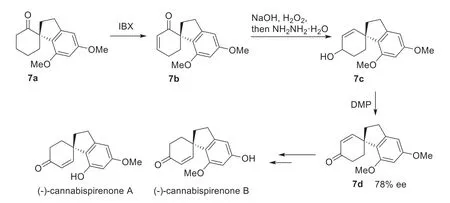
Scheme 6 Formal syntheses of(−)-cannabispirenones A and B

Scheme 7 Intramolecular α-arylation of functionalized cyclohexanone 8a

Scheme 8 Desymmetric enantioselective α-C(sp3)-H arylations of functionalized cyclohexanones
2.1.2 Palladium-Catalyzed Intermolecularα-C(sp3)-H Arylations of Cyclic Carbonyl Compounds
Buchwald et al.first reported an intermolecular Pd-catalyzedα-arylation of cyclohexanone 14 with 4-tert-butylbromobenzene 15 using Pd2(dba)3(1.5 mol%)/Tol-BINAP(3.6 mol%)to obtain product 16 in 83% yield(Scheme 10)[36].They speculated that the formation of active enol-palladium-aryl complex in the catalytic cycle was a key step.This speculation was later supported by theα-arylation of other active enol substrates[37-41].
Subsequently,Buchwald et al.started an asymmetric method for the first time.As a result,2-methyl-1-benzocyclohexanone 17a was arylated with aryl bromide 15 under the condition of Pd(OAc)2(10-20 mol%)/(s)-(-)-BINAP(12-24 mol%)to give 19a(yield 73%,88%ee)[42].The study also found that under the same catalytic system,2-methyl-1-benzocyclopentanone 17b was usedas the substrate to react with aryl bromide 18a leading to the arylated product 19b with loweevalue(70%).In view of the fact that these reactions are very sensitive to substrates and aryl bromides,Buchwald et al.screened diff erent substrates and aryl bromides,and finally found that the products(19c-19e)with higheevalue could be obtained by using cyclic ketone 17c as substrate in cooperation with aryl bromides(15,18a-18b)(Scheme 11).They also found that the reaction could be carried out under mild conditions(50 °C)using P(tBu)3as the ligand in similar catalytic system[43].Meanwhile,Hartwig et al.found enantioselectiveα-arylation of cyclic ketones(17a-17c)could be achieved by using phenolic trifluoromethanesulfonate(20a-20c)under the condition of Pd(dba)2/(R)-Difluorphos(Scheme 12).However,ketone 17d gave the corresponding product with loweevalue(78%)in this system[44].Interestingly,nearly comparable yields andeevalues were obtained by using quinine as the co-catalyst with Pd(dba)2[45].
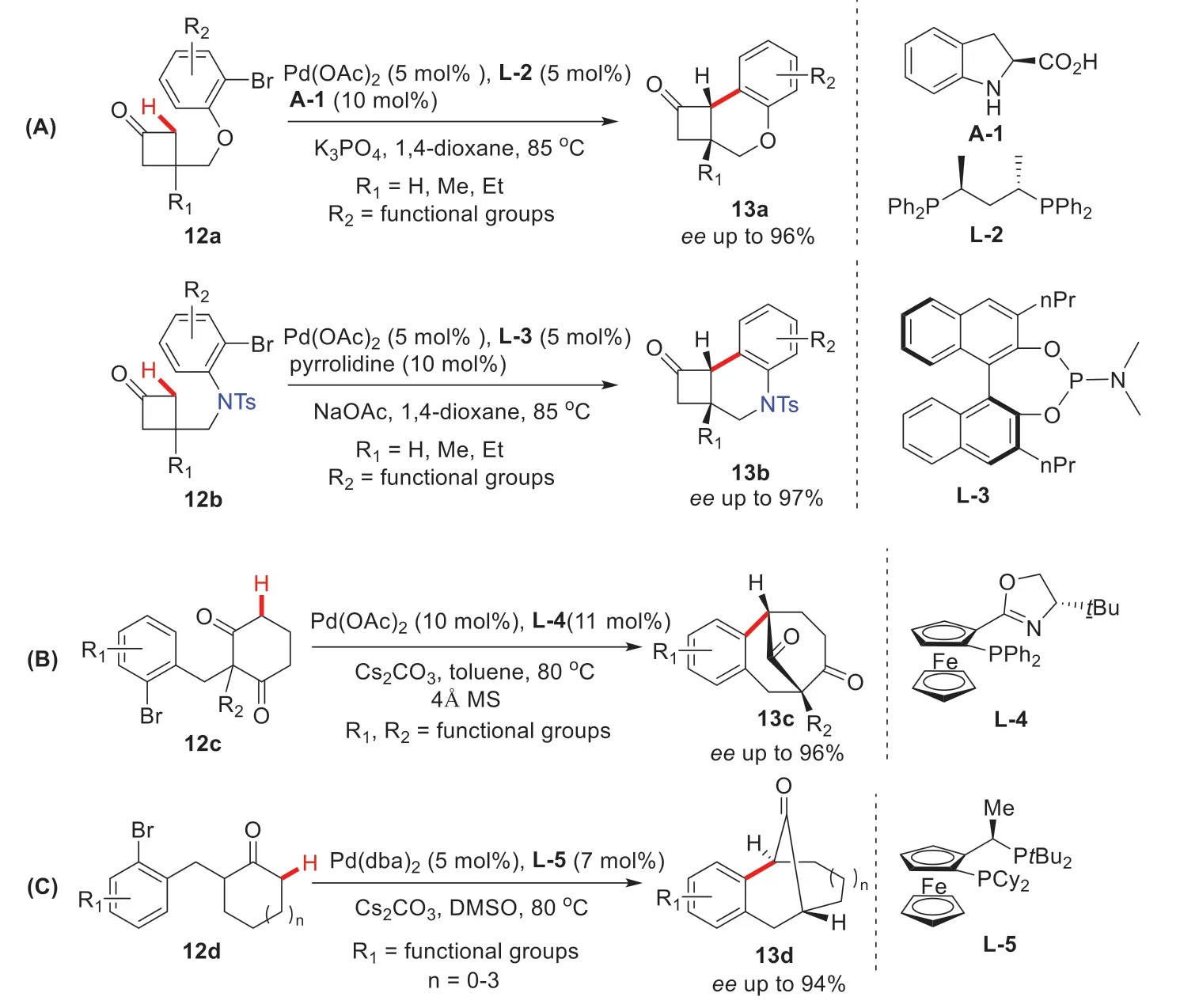
Scheme 9 Desymmetric enantioselective α-C(sp3)-H arylations of functionalized cycloketones

Scheme 10 Intermolecular α-C(sp3)-H arylation of cyclohexone 14
To further evaluate the reaction,Buchwald et al.conducted combinatorial studies on diff erent cyclic ketones(14 and 21a-21c),aryl bromides(15 and 22a-22d),and phosphine ligands(L-6 to L-10)(Scheme 13).The results showed that the large hindrance biphenyl phosphine ligands combined with Pd(OAc)2or Pd2(dba)3exhibiting high catalytic efficiency.It is worth noting that theortho-substituted aryl chloride(22a)orortho-disubstituted aryl bromide and aryl bromides containing electron-withdrawing groups(22b-22d)exhibited good compatibility to furnish aryl product(23a-23e)in 74-96% yields[46].Similar reports showed that theα-C(sp3)-H arylations of cyclic ketones 17a and 21a could also be achieved by using aryl chlorides[20]and azacarbene ligands[47].
With those satisfactory results,Buchwald et al.continued developing such catalytic systems to finally find a new chiral catalytic coordination of phosphine ligand((S)-L-11 to L-13)with Pd2(dba)3.Using the system,the asymmetricα-arylations of substrate(24a-24c)were carriedout at room temperature to form(26a-26g)(Scheme 14).Besides 4-methoxybromobenzene 25c,4-methyl,4-tertbutyl,3-methoxy,and 3-methylbromobenzene(25a,15,25b and 18b)could giveα-arylation products with high yield(72-88%)and high enantioselectivity(80-94%ee)[48].Hartwig et al.reported an asymmetricα-arylations of ketone 27 using aryl bromide 28(Scheme 15).In the Pd2(dba)3/(R)-difluorphos catalytic system,α-arylation product 30 was obtained with high yield(80%)and excellent enantioselectivity(94%ee),and the subsequent total syntheses of(−)-taiwaniaquinone H[49]and(−)-taiwaniaquinol B[50]were completed using 29 as raw materials[51](Scheme 15).

Scheme 11 Enantioselective α-C(sp3)-H arylations of cyclic ketones reported by Buchwald et al.
In view of the fact that theα-substituted cyclic carbonyl compounds can form chiral fixed all-carbon quaternary stereocenter byα-arylation,such as compounds 19a-19i,26a-26g,and 29,which can eff ectively avoid the racemization ofα-aryl compounds and subsequent reduce of optical purity.Moreover,the construction of chiral all-carbon quaternary stereocenter has always been attracted a majority of interests from the field of organic chemistry[52-58],so it is of great significance to design suitable substrates for such reactions.Hartwig et al.initiated the asymmetricα-arylation ofα-fluoroketone 34a under various catalytic systems.The results showed that all the attempts were either low yield(54%)or low ee(72%).They speculated that the enolization of 34a was less eff ective when using weak base K3PO4,butα-fluoroketones 34b could be completely enolized in situ by weak base[59].Based on the systematic screening of the catalytic conditions,Hartwig et al.found that the asymmetric coupling ofα-fluoroketones(34b-34c)with diff erent aryl bromides(25b and 35a-35e)could be efficiently realized under the catalysis of TMEDA·PdMe2/(S)-Difluorphosto which gaveα-arylation product(36a-36f)(Scheme 16)[60].
As a scope extension,Hartwig et al.found thatα-fluoro ketones 34d and 34e showed good compatibility.Under the catalysis of Pd(dba)2/(R)-L-14 or(S)-segphos,34d and 34e could react with diff erent aryl bromides or phenolic trifluoromethanesulfonate to formα-arylated products(36g-36l)with excellenteevalues(Scheme 17).Notably,pyridine,indole,and other nitrogen-containing aryl fragments could be well controlled[60].

Scheme 12 Enantioselective α-C(sp3)-H arylations of cyclic ketones reported by Hartwig et al.
α-Arylation of lactam is more challenging due to itsα-hydrogen is less acidic.In 1998,Hartwig et al.first reported palladium catalyzedα-arylation ofγ-lactam 37a.In this study,under a harsh condition of strong base(KHMDS)and high reaction temperature(100 °C),α-arylation product 39a was obtained in 49% yield using Pd(dba)2/BINAP catalytic system(Scheme 18,A)[61].Later,Cossy et al.described palladium catalyzedα-arylation ofδ-lactam 37b in the presence of ZnCl2,resulting in 85% yield ofα-arylation product 39b at a lower temperature(Scheme 18,B)[62].Very recently,Stoltz et al.reported an enantioselectiveα-arylation ofγ-lactam using Pd2(pmdba)3/L-15 or L-16(Scheme 19)[63].
Oxindoles are a kind of small lactam molecules with important biological activities.The C3-position(α-position of carbonyl)aryl substituted small molecule oxindoles are promising agents for clinical use[64].However,due to the higher pKa value of C3-hydrogen(ca.18.5)[61],it is hard to deprotonate to form enol,which makes the arylation of C3-position more limited.Willis et al.systematically screened the C3-arylation conditions ofN-methyl-oxindole 43a leading to a catalytic system of Pd(dba)2/XPhos/KHMDS/THF/Toluene.Under this condition,N-substituted oxindole(43a-43b)were successfully arylated at C3 position with diff erent aryl bromides(15,18b,25c,38,and 44a)to give corresponding products(45a-45f)(Scheme 20)[65].
Meanwhile,Buchwald et al.reported C3-arylations ofN1 unprotected oxindoles(46a-46c)under a similar catalytic system using aryl chlorides(47a-47f)as aryl sources and Cs2CO3as base to furnish C3 arylated products(48a-48f),in which(48e-48f)smoothly formed C3 all-carbon quaternary stereocenters(Scheme 21)[66].Recently,Hartwig et al.reported the C3 asymmetric arylation of 3-fluoroxindoles(49a-49e)based on their previous studies ofα-fluoroketones[60]using phenolic trifluoromethanesulfonate(50a-50b)as the aryl sources(Scheme 22)[67].
Buchwald et al.studied the asymmetric arylation of C3-methyl oxindoles.They revealed that C3-arylated product 48f of 3-methyl oxindole 46c could not be obtained by using aryl chloride 47f under Pd2(dba)3/XPhos/Cs2CO3catalytic system in THF,but could be got under the Pd2(dba)3/RuPhos/tBuONa system with aryl bromide 25b in toluene(Scheme 23)[66].Further optimization led to asymmetric arylation of 1,3-dimethyloxindole 52a with diff erent aryl or vinyl bromides(44a and 53a-53d)in the presence of TMEDA·PdMe2/(S,SP)-L-17 giving the C3 arylated products(54a-54f)with higheevalues(94-97%)[68].

Scheme 13 α-C(sp3)-H arylations of various cyclic ketones reported by Buchwald et al.
Direct introduction ofNatom into the reaction system can greatly promote the reaction by forming the Pd-N complex stabilizing the intermediate transition state and probably also activating the substrate[69-72].Dong et al.found that palladium catalytic system could be combined with pyrrolidine to eff ectively achieve theα-arylation of cyclopentanones 55a.In Pd(OAc)2/P(o-tol)3/pyrrolidine/AcONa system,some problematic aryl bromides(56a-56f)were well tolerable(Scheme 24)[73].
α-Substituted amino acids are a kind of importantly small bioactive molecules,which are fascinating tools to explore the biological process[74,75].Among them,theα-arylations of amino acids are usually prepared based on the pre-cyclic derivatives.Hartwig et al.first reported theα-arylation of amino acid derived lactones.It has been found that the use of bulky electro-rich ligands such as Ad2PtBu and Q-Phos could greatly improve the reaction efficiency givingα-arylated products(60a-60e)with high yields(Scheme 25)[76].Clayden et al.examinedα-arylations of cyclic amino acids hydantoin derivatives(61a-61c)under the Pd(TFA)2/L-9 catalytic system using aryl iodides(62a-62c)as aryl sources.They foundα-arylated products(63a-63e)could be obtained in good yields through ZnF2-mediated transmetallation(Scheme 26)[77].

Scheme 14 Improvements on arylation α-C(sp3)-H of cyclic ketones reported by Buchwald et al.

Scheme 15 Enantioselective total synthesis of(−)-taiwaniaquinone H and(−)-taiwaniaquinol B
Lactones are ubiquitous bioactive precursors of diols and relative analogues.Similar to lactams,conditions that involved strong base are often used to generate the enolates which may decrease the stereo-selectivity ofα-arylation.Pd-catalyzedα-arylation of lactone 64 with aryl bromides(18a,25b,44a,and 65a-65f)was developed by Jansat et al.using(S)-mandelic acid as a chiral auxiliary.In this Pd-catalyzed system,bulky P(tBu)3also showed a pivotal eff ect in both yields and stereo-selectivity,giving corresponding arylated products(66a-66j)(Scheme 27)[78].Zhou et al.reported an elegant study of Pd-catalyzed enantioselectiveα-arylations of lactone silyl enolates(67a-67c)with phenolic trifluoromethanesulfonates(68a-68f)at ambient temperature.Intriguingly,some sterical hindered aryl substrates(69b-69e)were well comrpatible(Schemes 28 and 29)[41].
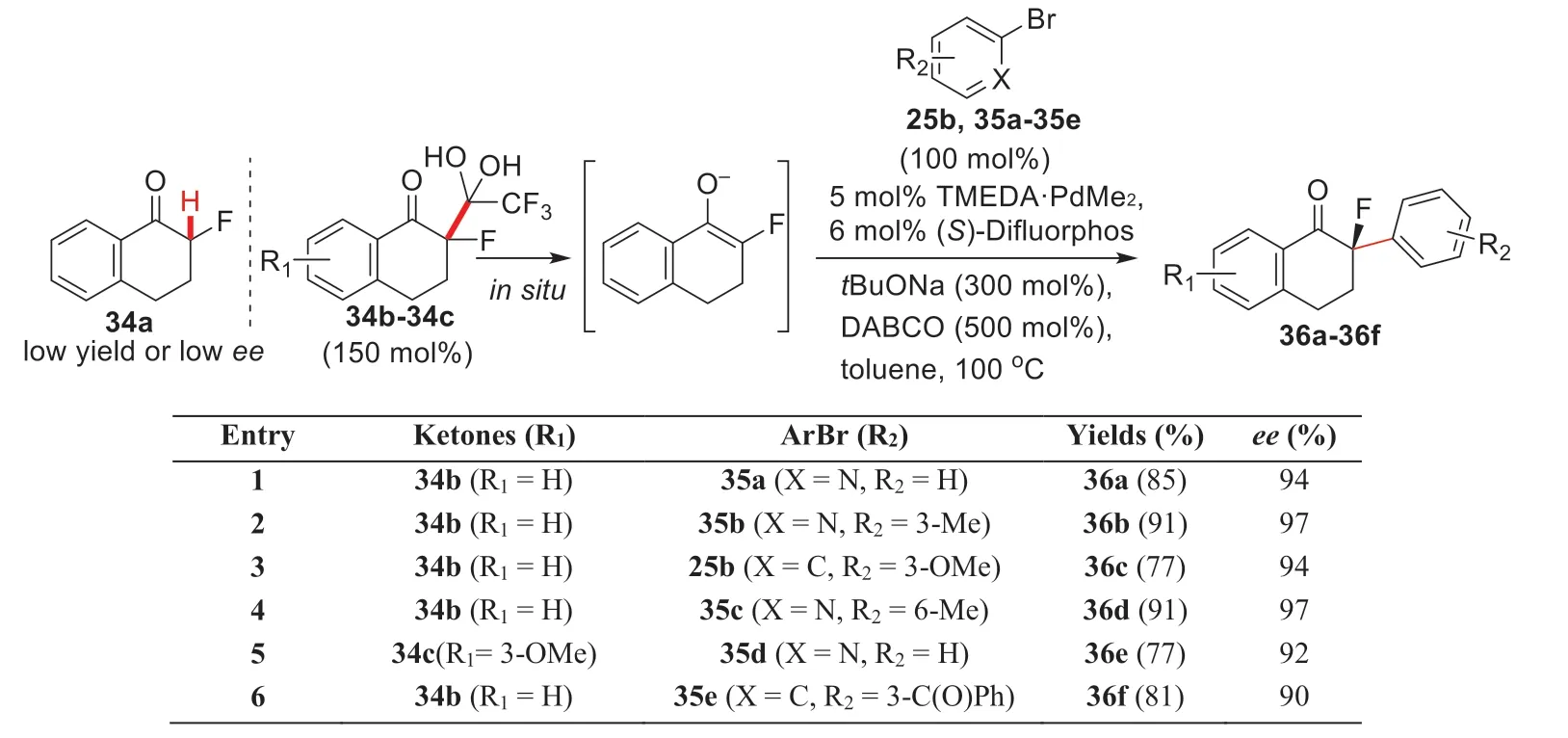
Scheme 16 Enantioselective α-C(sp3)-H arylations of α-fluoro ketones reported by Hartwig et al.
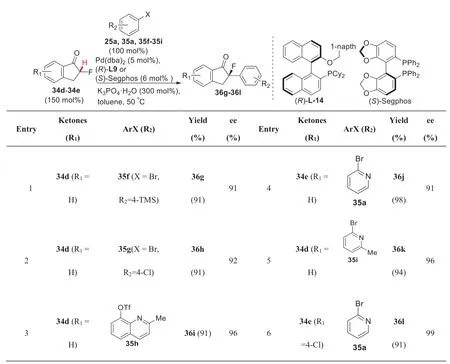
Scheme 17 Enantioselective α-C(sp3)-H arylations of α-fluoro-1-indanone

Scheme 18 α-C(sp3)-H arylations of Lactams reported by Hartwig et al.(A)and Cossy et al.(B)
Difficulties ofα′-C(sp3)-H arylations of cyclicα,β-unsaturated ketones are trifold.Aff ected by the conjugated system,the dienolates formed from cyclic ketenes are less nucleophilic than the corresponding enolates.In which,cyclic vinylogous ester(3-orβ-alkoxyl substituted cyclicα,β-unsaturated ketone)is more electron-rich thereby its dienolate is hardly formed by deprotonation.Furthermore,the dienolates are easy to polymerize with itself,further reducing the concentration of reaction substrate[79].Zhang et al.first reported theα′-arylations of 3-alkoxy-2-cyclohexenones(70a-70c)using Pd(OAc)2/BINAP catalyst system in corporation with strong base NaHMDS(Scheme 29),which facilitated the total synthesis of the natural product mesembrine(Scheme 30,Route A)[80].Shao et al.developed an asymmetric allylation based on common intermediate 73 further leading to the enantioselective total syntheses of(−)-mesembrine and(+)-oxomaritidine(Scheme 30,Route B)[81].
To overcome the limitation of aryl sources in this reaction,Lautens et al.screened diff erent palladium catalysts,and finally found that products(83a-83f)could be generated with high yield using the Palladium precatalyst Pd-P(tBu)3-G2,andα′arylation could be realized at room temperature(Scheme 31)[82].Theα′-arylation of 3-ethoxy-2-cyclohexenone can also be eff ectively promoted by using the bulky base[83]or phosphine ligand with large steric hindrance[84].
2.2 Nickel-Catalyzed α-C(sp3)-H Arylations of CyclicCarbonyl Compounds
As a non-noble metal,nickel has also been reported to promote theα-aromatization of cyclic carbonyl compounds.The mechanism of Ni-catalyzed arylation of carbonyl compounds is proved to undergo a similar catalytic cycle with those of Pd-catalyzed arylation(Scheme 2)[85].In 1973,Semmelhack et al.reported an intramolecularα-arylation of intermediate 84 catalyzed by Ni(COD)2,thus completing the total synthesis of cephalotaxinone(Scheme 32)[86].
In 2002,Buchwald et al.first reported the Ni-catalyzed intermolecularα-arylation ofα-methyl substitutedγ-lactones(85a-85c),and the asymmetricα-arylation produced 87a-87h with higheevalues(Scheme 33)[87].
Later,Chan group reported a Ni-catalyzed asymmetricα-arylation of 2-methyl-2,3-dihydro-1H-inden-1-one(88a),2-methyl-3,4-dihydronaphthalen-1(2H)-one(88b),and 6-methyl-6,7,8,9-tetrahydro-5H-benzo annulen-5-one(88c)with aryl bromide or iodide(89a-89 g).The catalytic system has good control over six-membered ring substrates,but poor control over five-membered and seven-membered ring substrates(Scheme 34)[88].It is worth noting that a negative contribution of ZnBr2to the catalytic system was observed in this work,which is contrary to the results of Buchwald et al.[87].Hartwig et al.found that the reaction efficiency and enantioselectivity of 2-methyl-3,4-dihydronaphthalen-1(2H)-one can be significantly improved by using electron deficient phenolic trifluoromethanesulfonate as aryl source under the Ni(COD)2(5 mol%)/(R)-Difluorophos(6 mol%)catalytic system[20].On this basis,they further studied the relationship between the catalytic system with the aryl sources,and found that Ni(COD)2,(R)-BINAP,and benzonitrile could form the catalytic active species[(R)-BINAP]·Ni(η2-NCPh).Using the active species as catalyst,theα-arylation product of 2-methyl-3,4-dihydronaphthalen-1(2H)-one can be obtained with quantitative optical purity(ee>99%)[89].Recently,it has been reported thatα-arylated products with better yields and highereevalues could also be obtained using aryl pivalate by Martin et al.[90]or indole substrate by Stanley et al.[91]under the Ni(COD)2/chiral ligands catalytic system.
2.3 Other Metal Catalyzed α-C(sp3)-H Arylations of Cyclic Carbonyl Compounds
In 2011,MacMillan et al.reported a Cu(I)-catalyzedα-arylation of enol silyl ether based onδ-lactone 91.The authors speculated that the highly active Cu(III)species in situ formed by the oxidation and insertion of diaryl iodonium salt promoted the reaction,which further underwent the oxidative addition and reductive elimination with enol silyl ether to furnish the final products(92a-92c)(Scheme 35)[92].
The corresponding enolates of carbonyl compounds are easily oxidized by oxidants,such as Cu(II),Fe(III)and so on,to form theα-radicals,which can couple with aryl radicals to giveα-arylated products.Baran et al.realized the oxidative coupling reaction of optically pure cyclic ketones(93a-93d)with indole 94a and 94b by using Cu(II)2-ethylhexanoate (150 mol%),and the correspondingα-arylated products(95a-95d)were obtained in moderate yields(Scheme 36)[93-95].With the method,they further completed the asymmetric syntheses of natural products(+)-hapalindole Q,(+)-welwitindolinone A,(+)-fischerindoles I,and(+)-ambiguine H starting from theα-arylated products(95a-95d).
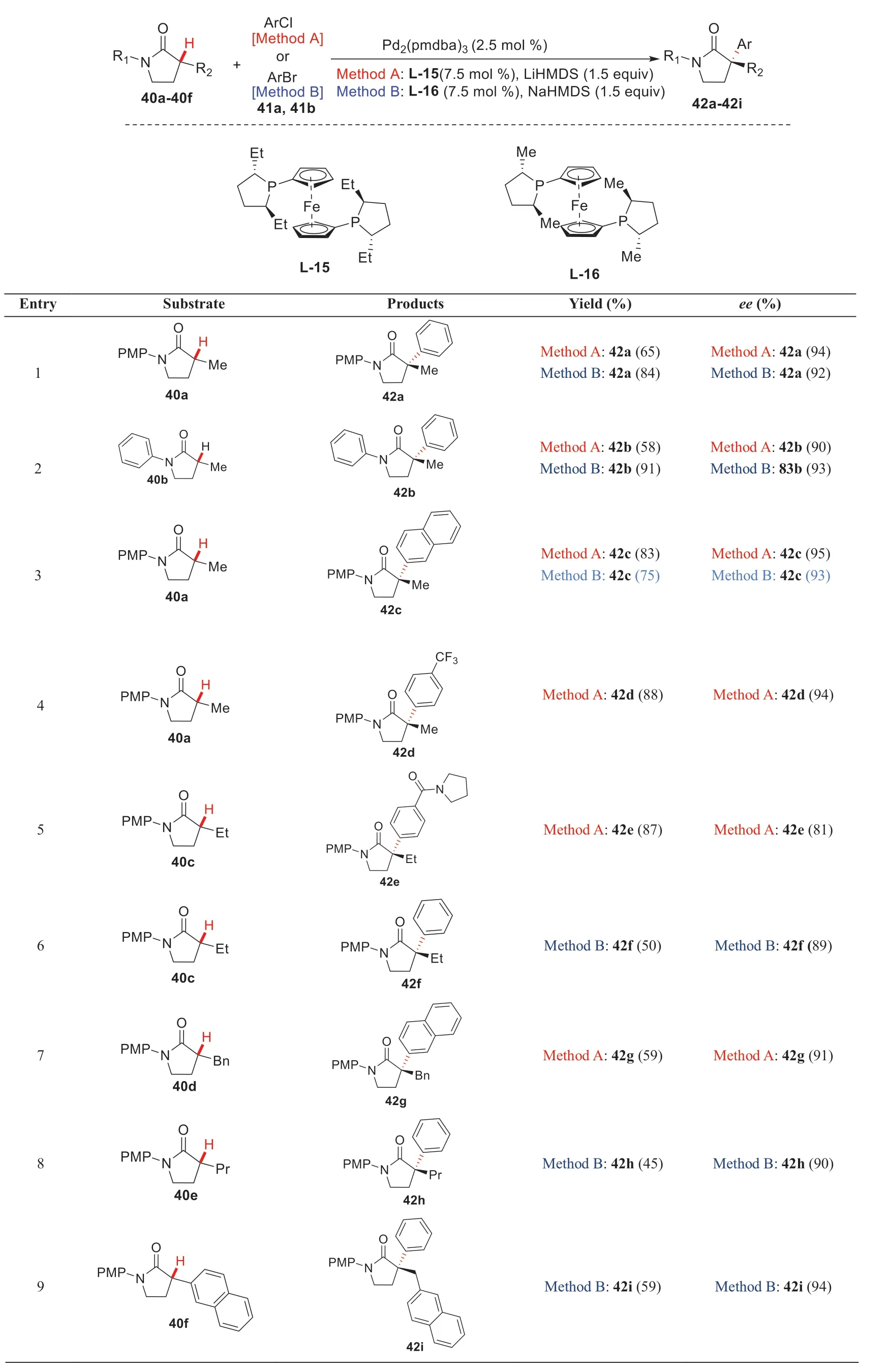
Scheme 19 Pd-catalyzed enantioselective α-arylation of γ-lactams by Stoltz et al.

Scheme 20 C3(sp3)-H arylations of N-substituted oxindole reported by Willis et al.

Scheme 21 C3(sp3)-H arylations of N1 unprotected oxindole reported by Buchwald et al.
Later,Li et al.group reported a Fe(III)-catalyzed arylation of 3-substituted oxindoles(96a-96f).They believed that the arylation was realized through the addition of free radical in situ generated by Fe(III)or molecular oxygen at C3 position to aryl groups.Moreover,this method was well suitable for preparation of C3-arylated products with largely steric hinderance like 97a-97f(Scheme 37)[96].
Feng et al.first described an asymmetric arylation of 3-substituted oxindole catalyzed by Sc(OTf)3/L-21.The asymmetric arylation of 3-substituted oxindoles was carried out under mild conditions,and the product 99a-99d with excellent optical purity(ee>98%)was obtained(Scheme 38)[97].
Umpolung reactions have been developed as unconventional methods for the synthesis of biologically active target molecules,although the umpolung arylation of cyclic enamines have been much less investigated.Miyata et al.first developed of an efficient umpolung reaction by polarity inversion at theβ-position ofN-alkoxyenamines 101,which allowedα-arylation of various cyclic ketones 100 under mild conditions(Scheme 39)[22].
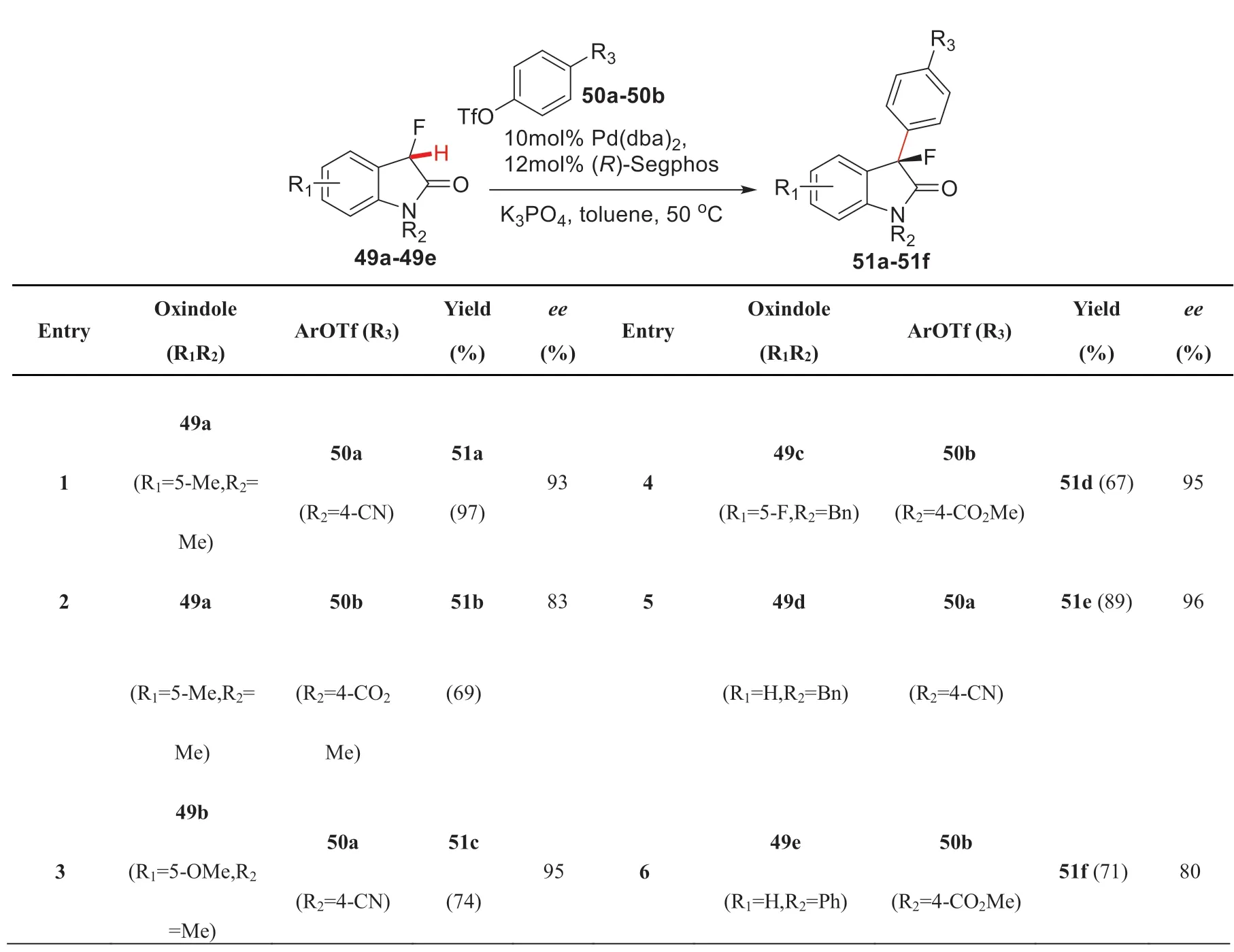
Scheme 22 Asymmetric C3(sp3)-H arylations of 3-fluoroxindole reported by Hartwig et al.
3 Transition-Metal-Free α-C(sp3)-H Arylations of Cyclic Carbonyl Compounds
Benzyne has high electrophilicity and is easily attacked by nucleophiles to form arylated products.As early as 1966,Ueda et al.reported theα-arylation through the intermediate of benzyne[98].In the total synthesis of lycorane,they treated the intermediate 107a with lithium piperidine to form the intermediate 107a′,which underwent intramolecular addition to form theα-arylated product 108(Scheme 40).Later,the benzyne-based arylation was applied toα-arylation of lactam[99],asymmetricα-arylation of cyclic ketone in the presence of organic small molecular amines[100].However,the biggest problem of this method is the regioselectivity of addition to benzyne,which is difficult to apply in multiple substituted aromatic substrates.
Photo-initiated SRN1 aromatization is an eff ective method for arylation of carbonyl compounds,which was first applied to the total synthesis of cephalotaxinone by semmelhack et al.[79].Recently,Xia et al.reported the visible-lightpromoted the 3-position arylation of 3-substituted oxindoles.They proved that the reaction followed the SRN1 pathway through the activation of aryl iodide.The method has the advantages of wide substrate compatibility(111a-111f),high yield(68-85%),and easy operation(Scheme 41)[101].
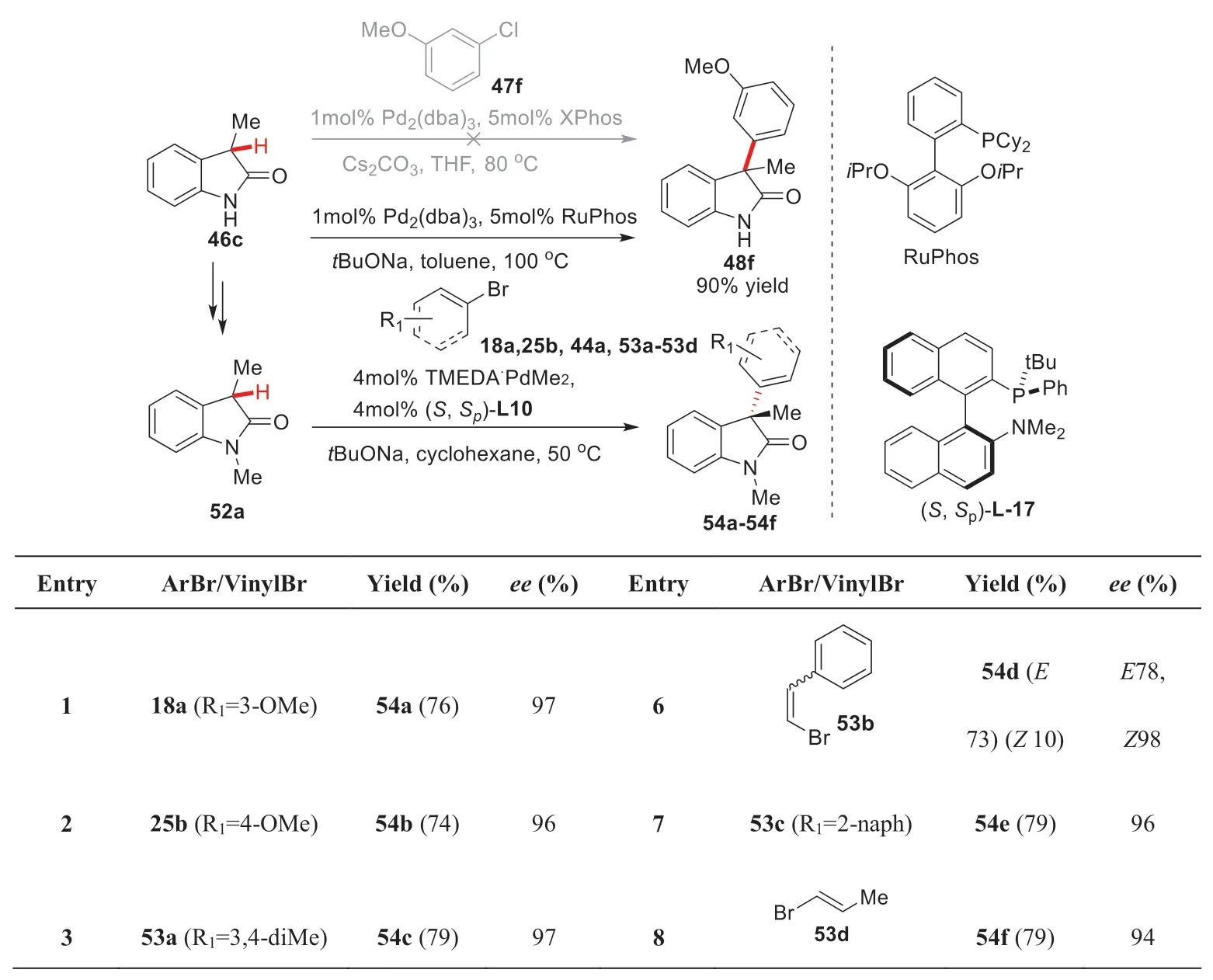
Scheme 23 Asymmetric arylation of 1,3-dimethyl oxindole reported by Buchwald et al.
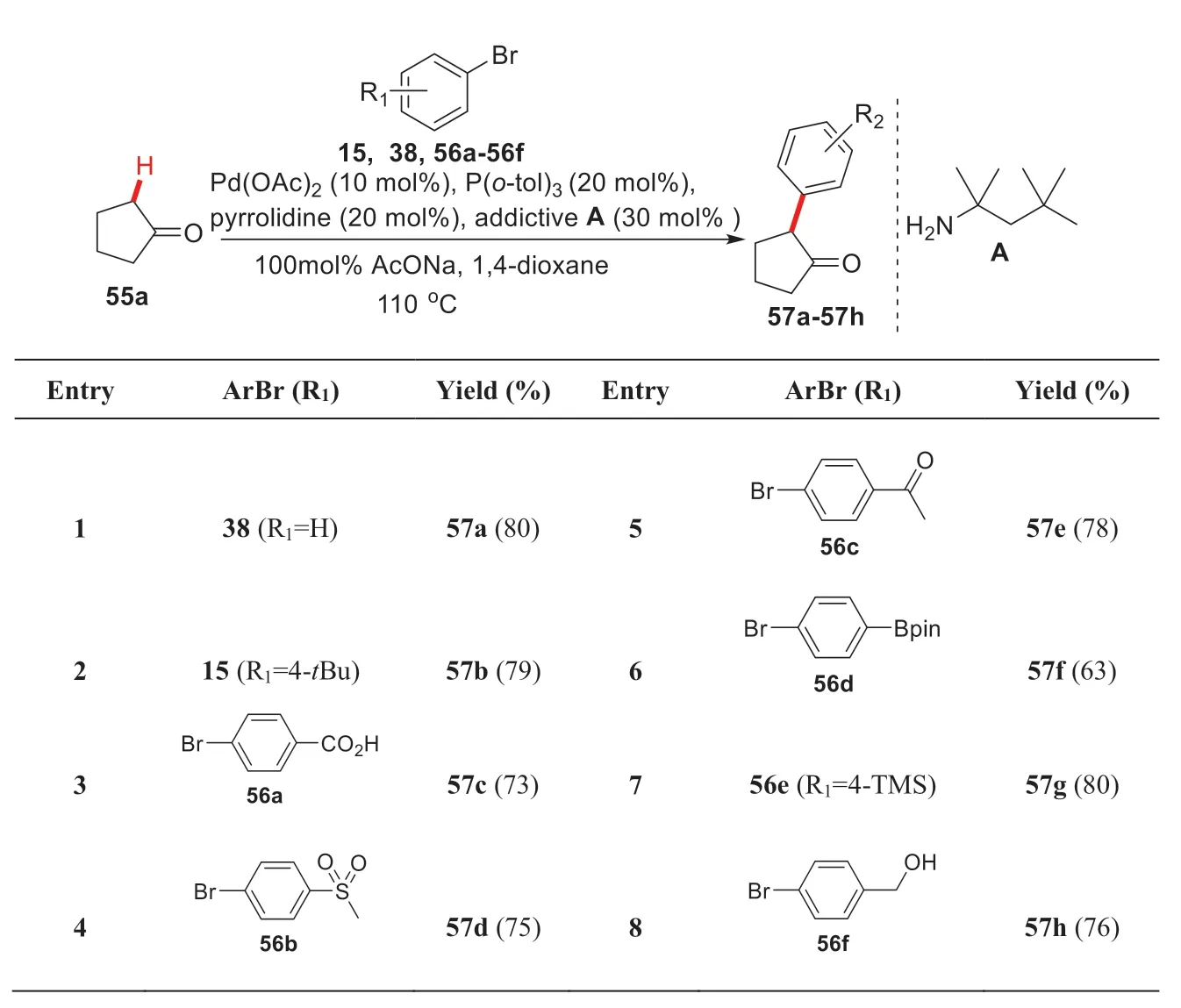
Scheme 24 α-C(sp3)-H arylations of cyclopentanone reported by Dong et al.

Scheme 25 α-(sp3)-H arylations of oxazol-5-ones by Hartwig et al.
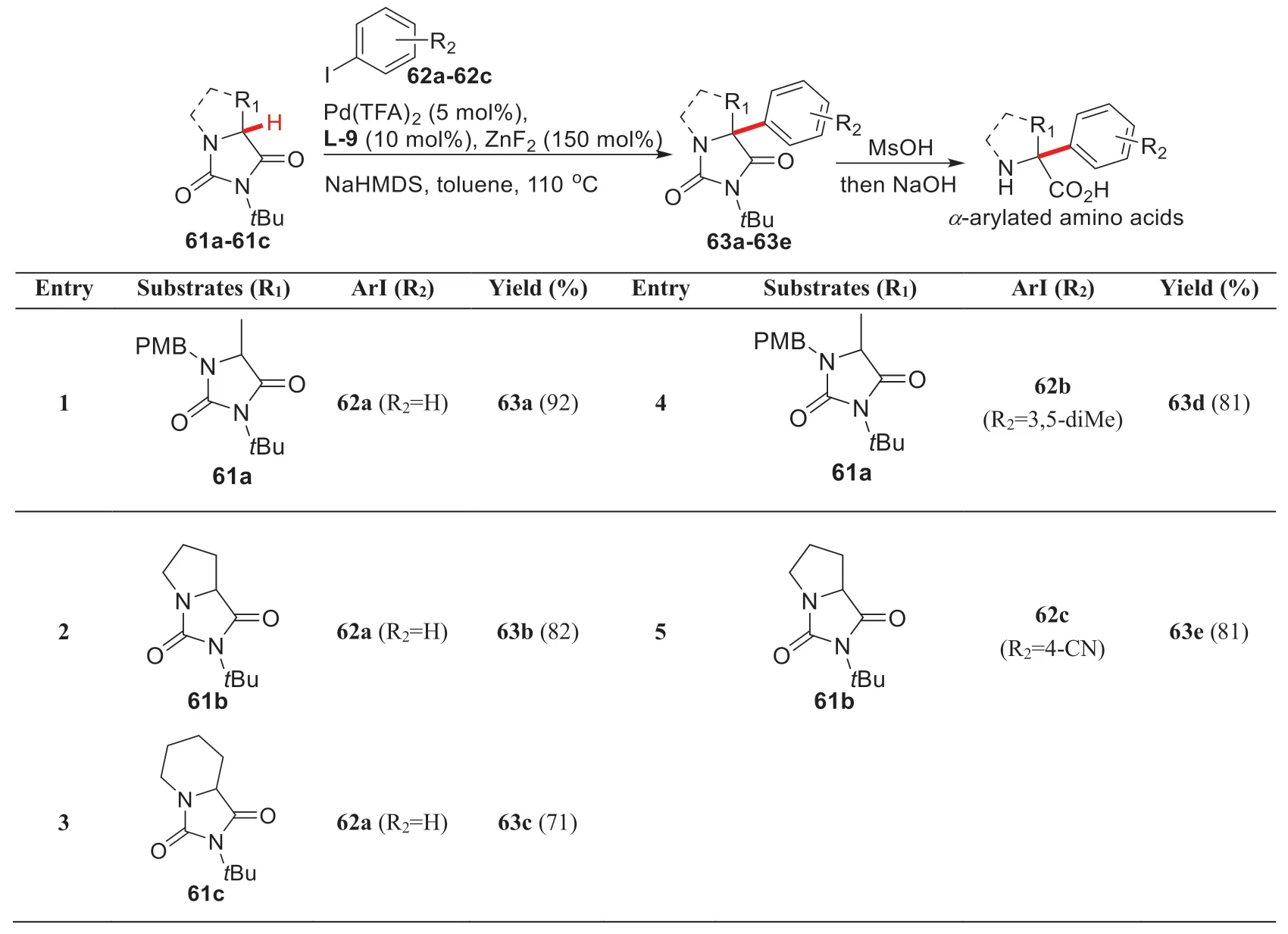
Scheme 26 α-(sp3)-H arylations of hydantoins reported by Claden et al.

Scheme 27 Enantioselective α-C(sp3)-H arylation of lactone reported by Jansat et al.
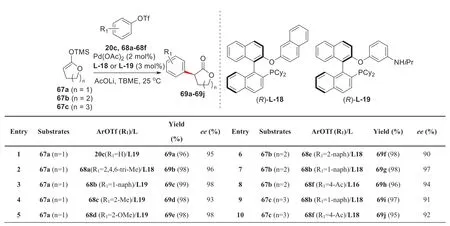
Scheme 28 Enantioselective α-C(sp3)-H arylation of lactone-based silyl enolates by Zhou et al.

Scheme 29 α′-(sp3)-H arylations of 3-alkoxy-2-cyclohexenones reported by Zhang et al.

Scheme 30 Total syntheses of mesembrine and oxomaritidine by Zhang(Route A)and Shao(Route B)et al.

Scheme 31 α′-C(sp3)-H arylations of 3-ethoxyl-2-cyclohexenone reported by Lautens et al.
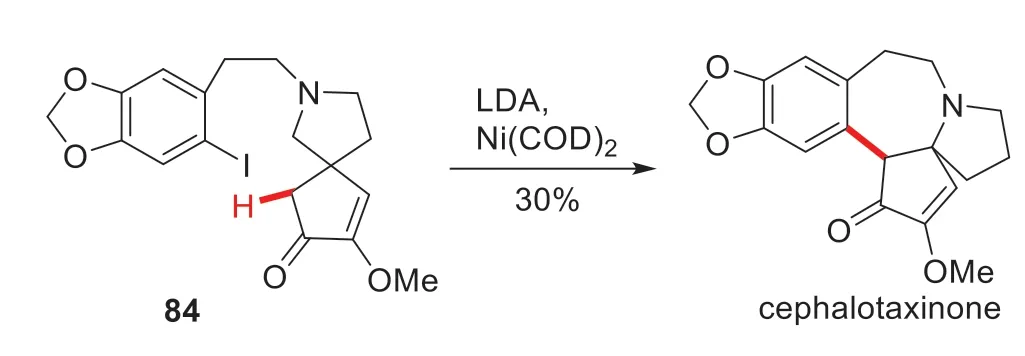
Scheme 32 Intramolecular α-arylation of intermediate 84 reported by Semmelhack et al.
Jørgensen et al.first reported theα-arylation of cyclic 1,3-diketone 112a by using phase transfer catalyst(PTC)through the nucleophilic aromatic substitution(SNAr)reaction with electron deficient benzene 113a(Scheme 42,A)[102].Later they found quinine could also promote such transformation when using 1,4-quinone 113b as aryl source(Scheme 42,B)[103].Maruoka et al.successfully achieved 3-position asymmetric arylation of oxindole by the reaction of 3-substituted oxindoles(115a-115c)with electron deficient fluorinated aryl compounds(116a-116c)under the catalysis of(S)-PTC2(5 mol%).The arylated products(117a-117e)was obtained in high yields with excellenteevalues(Scheme 43)[104].Subsequently,Kumar et al.found that reaction ofN-methyloxindole and nitrobenzene in DMSO usingtBuONa as base,the 3-arylation product could be obtained in good yields.They also proved that the reaction was realized by the addition of oxindole anion to nitrobenzene[105].

Scheme 33 Enantioselective α-C(sp3)-H arylations of α-substituted γ-lactones

Scheme 34 Ni-catalyzed Enantioselective α-C(sp3)-H arylation of α-methyl cyclic ketone

Scheme 35 Cu-catalyzed α′-C(sp3)-H arylations of δ-lactone-based enol silyl ether

Scheme 36 Enantioselective α-C(sp3)-H arylations of cyclic ketones reported by Baran et al.
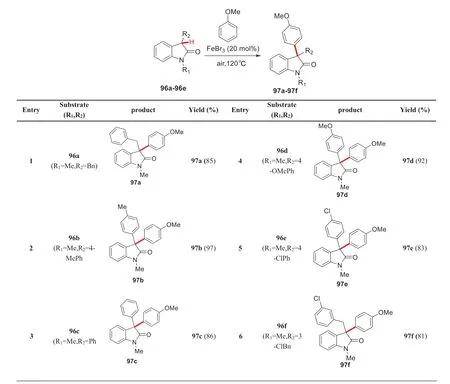
Scheme 37 Fe-catalyzed arylation of 3-substituted oxindole reported by Li et al.
Anyang et al.reported aα-arylation of cyclicα-nitroketone 118 with various diaryl iodonium salts which are environmental friendly,easy to prepare,and stable.α-Arylated products(119a-119j)were obtained in moderate to high yields(Scheme 44)[106].

Scheme 38 Asymmetric C3-arylations of 3-substituted oxindoles reported by Feng group

Scheme 39 α-C(sp3)-H arylations through umpolung reaction
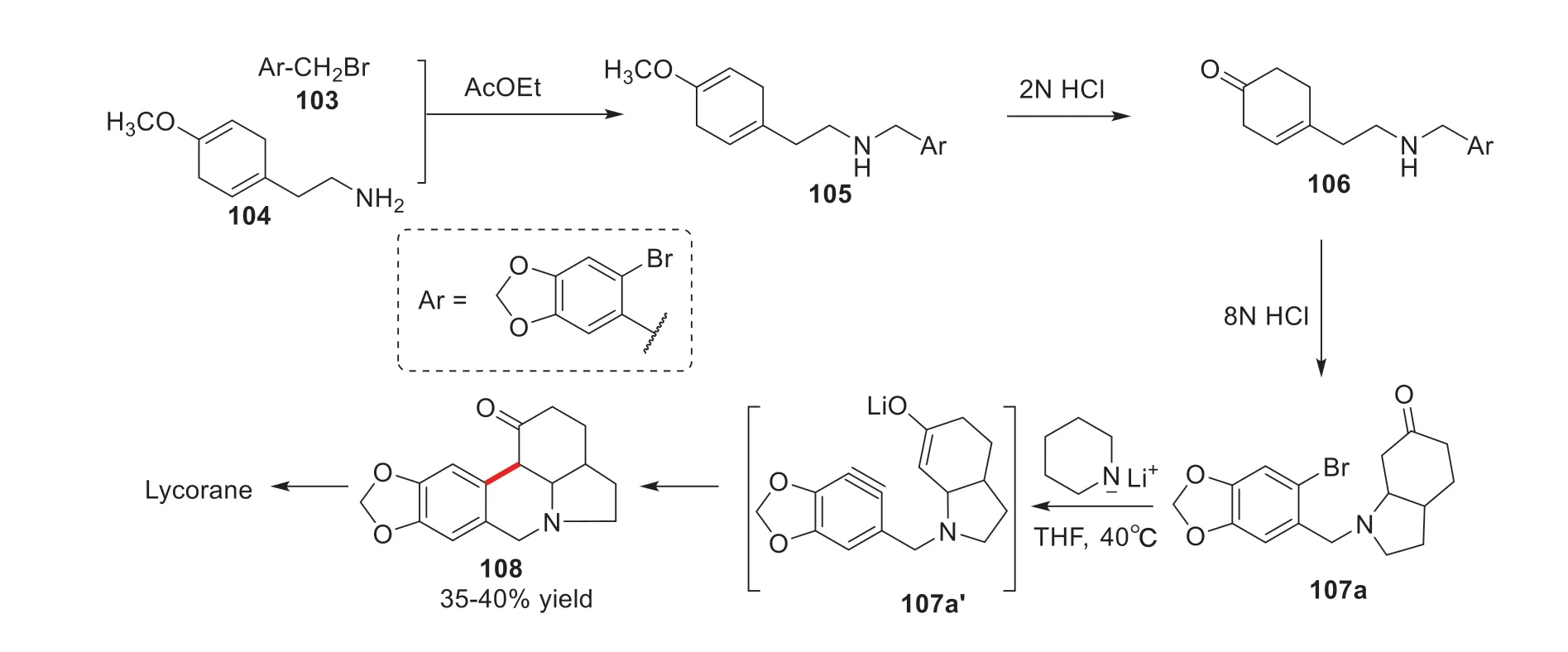
Scheme 40 Total synthesis of lycorane via intramolecular addition of benzyne

Scheme 41 visible-light-promoted C3-arylations of 3-substituted oxindoles reported by Xia et al.

Scheme 42 α-C(sp3)-H arylations of cyclic 1,3-diketones catalyzed by PTC(A)and quinine(B)

Scheme 43 Asymmetric C3-arylations of 3-substituted oxindoles reported by Maruoka et al.
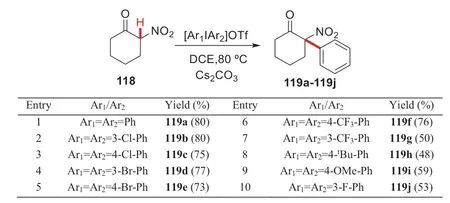
Scheme 44 α-C(sp3)-H arylation of cyclic α-nitroketones with diaryl iodonium salts
4 Conclusion
In recent years,α-C(sp3)-H arylation of cyclic carbonyl compounds has made a great progress,which provides many simple and eff ective methods for syntheses of molecules for biological tool,active natural products,and drugs,etc.,such as 3-aryl 3-fluoroindoles,etc..However,most of the asymmetric methods are limited to transition metal catalytic systems,problems such as how to realize green procedures and relatively small range of substrates remains to investigate.For example,Ni(0)catalyst is highly toxic,aryl halides withorthohindered substituent have low compatibility in palladium catalytic system[107],asymmetricα-arylation of amino acids,and control ofα-C(sp3)-H arylation through free radical process,etc.,need to be solved.
AcknowledgementsWe gratefully acknowledge financial support from the National Science of Foundation of China(81960631),the Yunnan Fundamental Research Project(202001AS070038),the Top Young Talent of Ten Thousand Talents Program of Yunnan Province(R.Zhan and L.-D Shao),and the Start-up Fund of Yunnan University of Chinese Medicine(2019YZG03).
Open AccessThis article is licensed under a Creative Commons Attribution 4.0 International License,which permits use,sharing,adaptation,distribution and reproduction in any medium or format,as long as you give appropriate credit to the original author(s)and the source,provide a link to the Creative Commons licence,and indicate if changes were made.The images or other third party material in this article are included in the article’s Creative Commons licence,unless indicated otherwise in a credit line to the material.If material is not included in the article’s Creative Commons licence and your intended use is not permitted by statutory regulation or exceeds the permitted use,you will need to obtain permission directly from the copyright holder.To view a copy of this licence,visit http://creat iveco mmons.org/licen ses/by/4.0/.
杂志排行
Natural Products and Bioprospecting的其它文章
- Hinokiflavone and Related C-O-C-Type Biflavonoids as Anti-cancer Compounds:Properties and Mechanism of Action
- Naturally Occurring Terpenes:A Promising Class of Organic Molecules to Address Influenza Pandemics
- Diterpenoid Alkaloids from the Aerial Parts of Aconitum flavum Hand.-Mazz
- Screening and Purification of Natural Products from Actinomycetes that Induce a“Rounded”Morphological Phenotype in Fission Yeast
- Psathyrellins A-E,Antibacterial Guanacastane Diterpenoids from Mushroom Psathyrella candolleana
- New Secodaphnane-Type Alkaloids with Cytotoxic Activities from Daphniphyllum angustifolium Hutch
